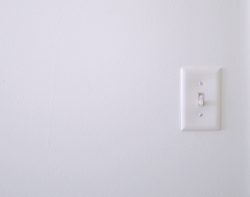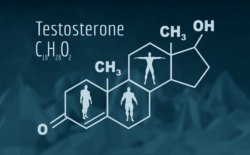When discussing my writing and research amongst a group of peers recently, I was struck by how quickly the conversation devolved into the more apparently, though not really, salacious articles I have written as of late. Yes, they were about sex and often cursorily about penis size. Mostly though, the articles used the phrase penis size as a vehicle to introduce bad research or media on medically-related topics. Of course, the added benefit of using one of the most popular search phrases on the internet was not lost on me and I used it to my advantage.
In these articles, I pondered our notions about sex and language; sometimes in jest, sometimes in all seriousness, but in each case, it was not the topic of the article that was most intriguing to those in this conversation, it was the blatant use of the taboo words penis size that merited the school-aged giggles from otherwise hyper-educated adults. And so it is, that I have begun to be introduced to folks, not by the serious research and commentary that I do, but by the posts on penises and sex. Yes, mom, I got a PhD to talk about penis size.
The interesting thing is, I know relatively nothing about penis size and frankly, I am learning that few of us do. The subject is taboo and like much of sexual health, riddled more with myth and misunderstanding than actual data. Do women (or men) prefer larger penises or is that merely one component of a complicated sexual dance? Are there racial or geographic differences is size, as myth proclaims or do the larger or smaller among us average out when large data sets are analyzed? Are there data sets about the size to pleasure ratio or is that just too taboo to even consider? Is this something a legitimate researcher should even consider considering (how’s that for a bit of deconstructive thought – thinking about thinking) or does the mere fact I am discussing this topic publicly, obliterate any hope of being taken seriously for my other research? Social mores what they are, it’s probably the latter. That is unfortunate and this is why.
The taboos that define what we can say, see or even know about sex or sexual health seep into every aspect of medical research and certainly political thought. In men’s health, think about circumcision for a moment. How might we approach that differently, if parents were given accurate information about male anatomy – that yes, in fact there are nerve endings that reach all the way to the tip of the penis and that yes, infants do feel pain. Might we not be so ready to lop things off for some biblical, pre-sanitation view of reality? Perhaps, but because we can’t talk about these things openly, we are left with myth to make medical decisions. Grown men know more about the anatomy and physiology of the heart muscle than they do of their own penis. Talk about driving blind.
In women’s health, it’s even worse. The powers of the magical vagina are so strong that even saying the V word can get men or women fired from jobs. Just recently, a high school health teacher was fired for teaching female anatomy and daring to ascribe the proper terminology to the female reproductive organs. In the overly litigious and ridiculously tabooed work environment, I suspect even using the word vagina in polite company might yield claims of sexual harassment (oh, our sensitive ears). And don’t even think about showing pictures of the female pelvic anatomy – that would be porn.
Even common medical imagery of the female sexual anatomy is often neutered with Barbie parts. Really, it is.
This is something that I recently and quite accidentally discovered; medical and scientific renderings of the female pelvic anatomy are not always complete (I suspect similarly incomplete imagery for male anatomy but have yet to investigate). Nerves, blood vessels, and the like, end well before reaching the magical, mystery areas of the female labia and clitoris. Indeed, in many illustrations those regions do not exist but are replaced by neutered Barbie parts. Keep the magic and mystery alive. Who knows what would happen if we were to show those sacred anatomical features. Oh no, women might realize there are nerves down there. Worse yet, physicians might recognize that there are nerves and begin understanding that the ‘psychogenic’ sex pain could be nerve compression. Gads, we’d lose the multi-billion dollar antidepressant industry.
If we can’t have adult conversations about sex or sexual anatomy or accurately portray visual images of human sexual organs without risk of repercussion, how in the world are we to treat diseases that affect said organs? A more fundamental question – would we have more fun if the tools of the trade were more thoroughly understood and appreciated? Perhaps.
Some interesting sites with complete pelvic anatomy and information about male and female nerve damage:
- Health Organization for Pudendal Education – bet you never heard of the pudendal nerve. The pudendal nerve is responsible for sensation to the penis and the clitoris. Damage that nerve and you have problems.
- Interactive Atlas of the Female Pelvis. This shows how incredibly complex the female pelvic region is. It makes me wonder how much damage we’re causing with cesareans and hysterectomies.
Learn pelvic anatomy. Break the taboos.














How ridiculous that sex organ terminology is acceptable and even commonplace on TV but not in a high school biology lesson! And yes, I have heard of the pudendal nerve and actually came across it again today while working on my next article about anatomical changes caused by hysterectomy.